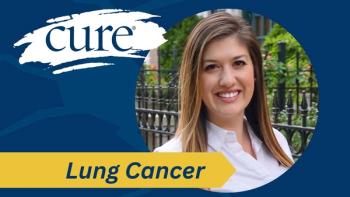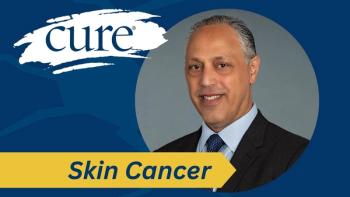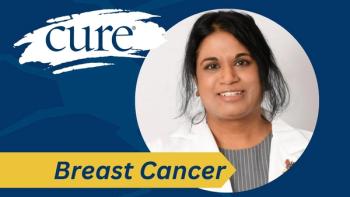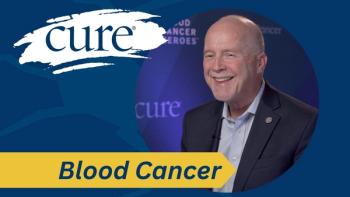
Hungry for Information: Study Explores the Needs of Patients With Cancer
A recent study explored six cancer-related dilemmas: understanding diagnosis; treatment planning; communication with the care team; finance and insurance issues; symptoms, side effects and quality of life; and survivorship.
More than 20 years after being treated for Hodgkin lymphoma, Terry Langbaum received a letter in the mail telling her that if she smoked, she was at high risk for lung cancer.
“I remember thinking, ‘Boy, I would have liked to know that 10 years ago,’” said Langbaum, who is now the chief administrative officer at Johns Hopkins Kimmel Cancer Center. “If I were a smoker, that information would have been very important.”
Langbaum’s struggle of not being informed about possible late-effects of cancer treatment is just one of the many laid out in CancerCare’s 2016 Patient Access and Engagement Report, which outlines the needs and experiences of patients with cancer. Data included the responses from more than 3,000 patient surveys, which Langbaum helped develop as part of CancerCare’s advisory committee.
“We’re so used to seeing anecdotes, but when we see this all together in one place, it’s disheartening, because so many people will be affected by cancer,” said Ellen Sonet, the chief strategy and alliance officer of CancerCare, a nonprofit that offers support services and educational programs to people with cancer.
The report addressed six cancer-related dilemmas: understanding diagnosis; treatment planning; communication with the care team; finance and insurance issues; symptoms, side effects and quality of life; and survivorship.
According to the research, patients are often ill-informed about every one of these topics.
“One of the alarming findings is that the patients’ information needs are quite extensive when they are making treatment decisions,” Sonet said. “In our study, more patients than not needed information that we think should be pivotal about making decisions.”
Information included whether or not a treatment plan would allow a patient to continue working, what kind of care they might need at home and information for caregivers.
Barriers to Communication
Some populations faced even worse barriers to communication and understanding of their disease. In the African American and Hispanic communities, 22 percent of respondents said they had “serious communication problems with their clinical care team, including a lack of translation services.” Nineteen percent reported difficulty understanding what the doctor said, and 20 percent experienced discomfort discussing how their cultural, religious and personal values affected treatment.
Sonet said that uninformed decisions regarding care often come from the rapid pace at which the health care system treats patients, as well as fear and anxiety surrounding the disease.
“People say ‘Get this thing out of me, I don’t care what it takes’,” Sonet said. “They spend more time deciding what refrigerator they should buy rather than who is going to take out their colon.”
Further, Langbaum emphasized that while large research centers typically have more staff members such as educators and nurse practitioners to help guide patients through their treatment, smaller oncology practices, where many patients in the U.S. are treated, do not.
Though only about half of the responders said that their care team regularly inquired about distress, the majority of responders said that they “trusted their physicians, understood the reasons for medication and believed they were getting the best care.”
But that still doesn’t mean that these patients had all of their questions answered.
“It would be wonderful if an oncologist had an hour to sit down and talk every time they say a patient, but they just don’t,” Langbaum said.
Financial Toxicity
The study also found that patients are ill-informed when it comes to paying for their cancer treatment. This is especially true for younger patients, Sonet noted, who are not on Medicare and have a range of companies and coverage plans from which to choose.
The study said, “[E]ach person’s out-of-pocket cost to treat his or her cancer can vary considerably based on the individual’s type of treatment, length of treatment, treatment center location and type of insurance.”
Sonet explained that the average monthly out-of-pocket fee for non-Medicare patients was over $1,000 — a figure she said is “not sustainable.”
“They don’t know what they don’t know until they experience it. All of a sudden they find out that something they thought was covered wasn’t,” she said. “It ends up being much more expensive than they thought.”
Langbaum echoed this sentiment.
“It is nearly impossible to predict that out-of-pocket cost. Also, cancer treatment itself is not predictable,” she said. “We’re constantly changing, so there’s no way to predict that you may need an antibiotic tomorrow because your white blood count dropped.”
The study also came to the conclusion that 25 percent of responders under the age of 65 claimed that their medical team never considered the patient’s financial situation when deciding on a treatment plan. And despite the fact that more than half of survey responders said that thinking about finances during cancer treatment “caused feelings of distress,” people are not talking with their doctors about money, for fear of receiving sub-par treatment.
“They’re reluctant to say that they have an affordability concern, because they’re afraid they might not get the best treatment they can get,” Sonet said. “Those conversations need to happen because we’re talking about real people and real lives.”
Disparities Among the Young and Old
In addition to financial distress, the study found that younger patients, who fell between the ages of 25 and 54, generally experienced higher levels of distress and have “information needs that older patients don’t seem to have,” Sonet said.
And while a smaller proportion of older patients (over 64) participated in clinical trials than their younger counterparts, only 12 to 18 percent of patients reported having access to clinical trial information.
“This is especially impactful on patients who have metastatic disease because very often, it’s not curable and clinical trials can be the only opportunity to find something that works,” Langbaum said.
Overall, the authors of the study hope that the report will be a catalyst for change so that patients have a better quality of life throughout and after their cancer experience.
“Patients need to be their own advocates, but we [medical professionals] should empower them to ask the right questions,” Langbaum said.




